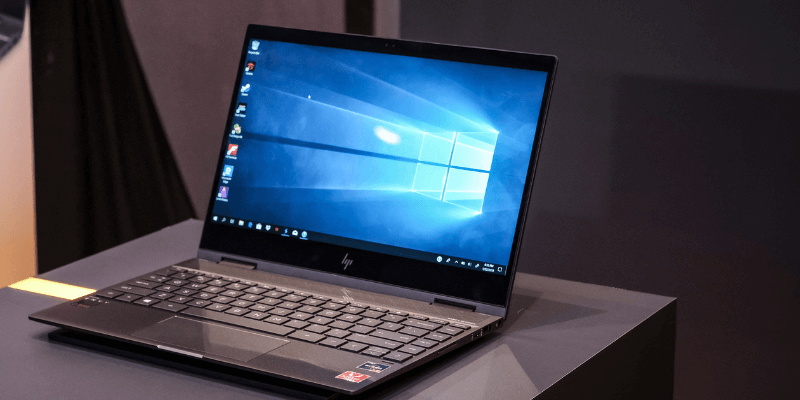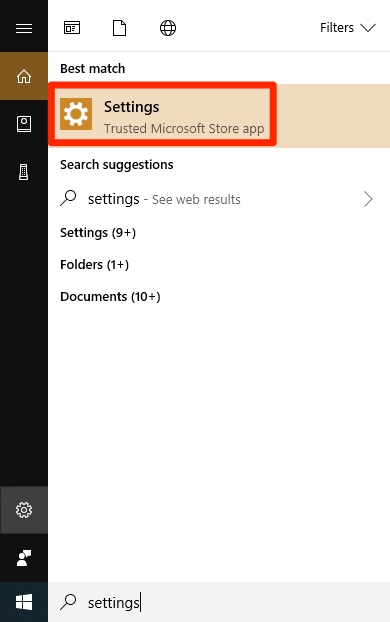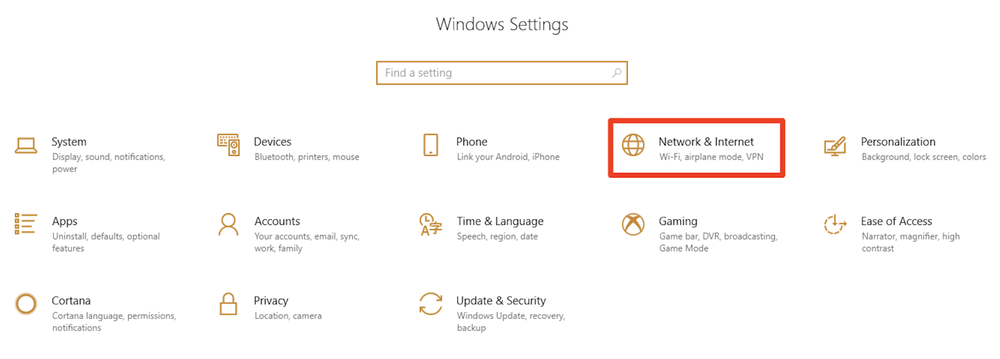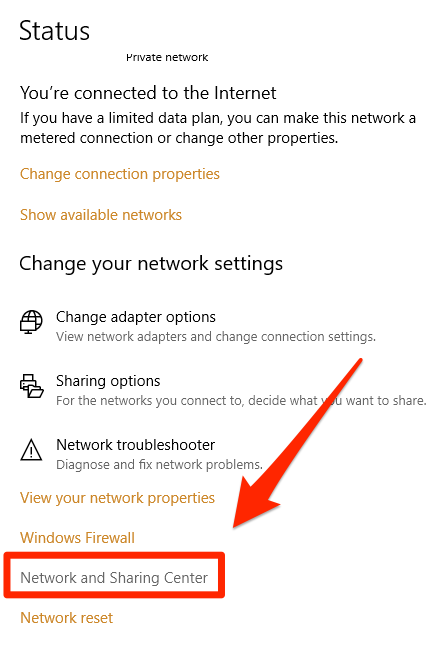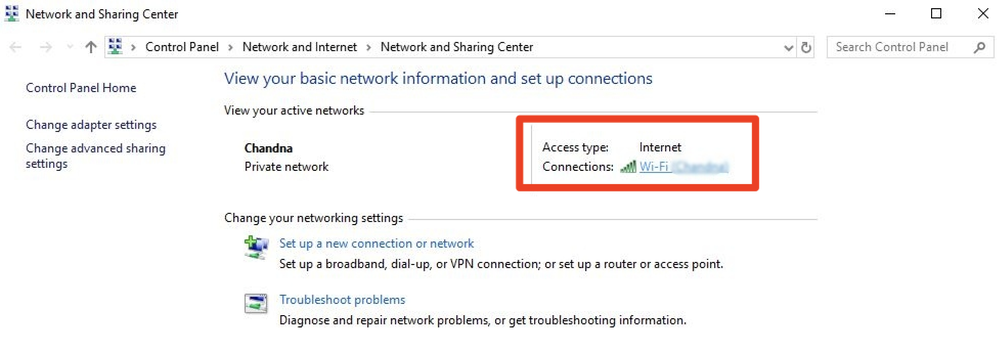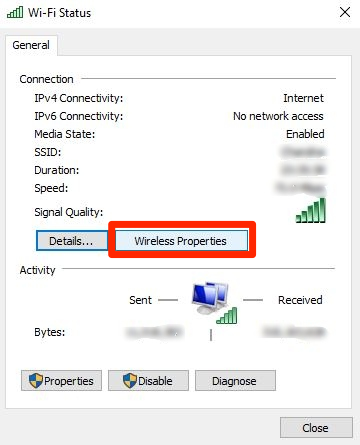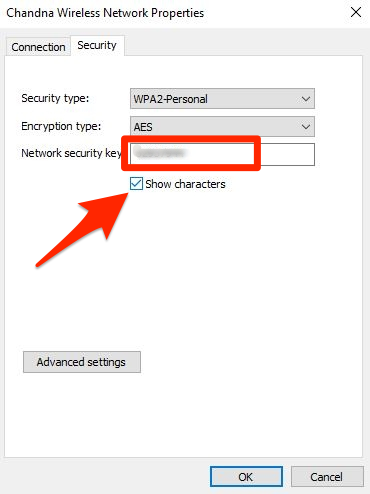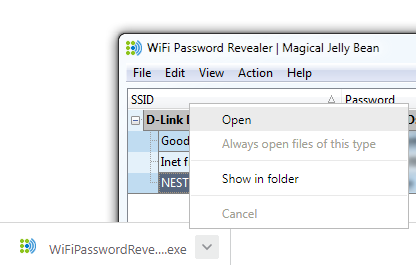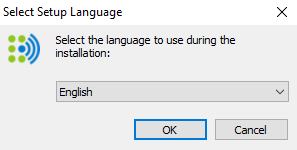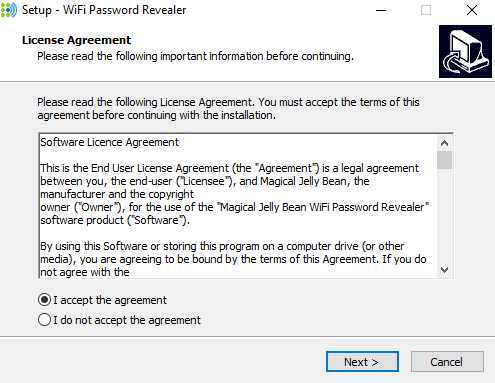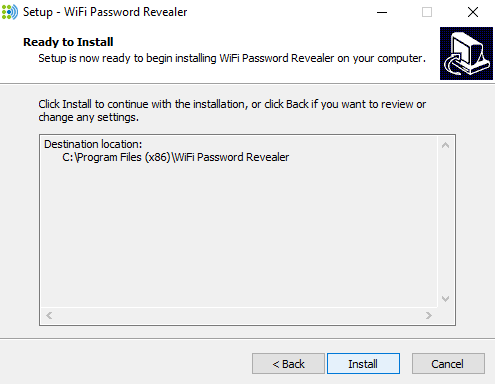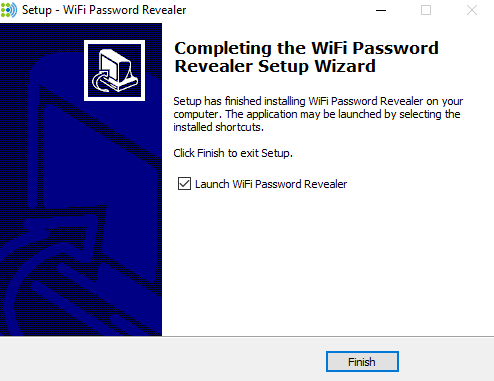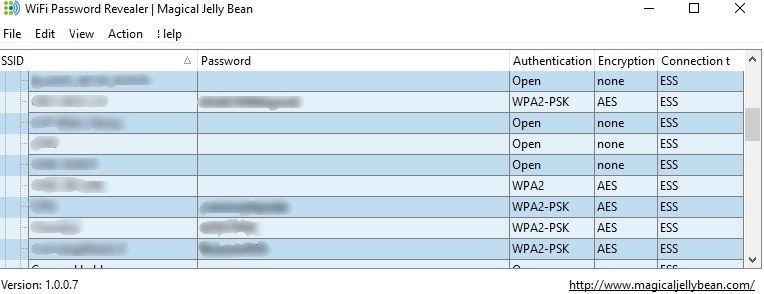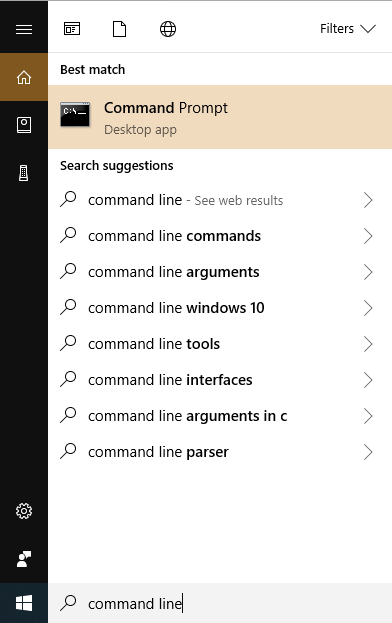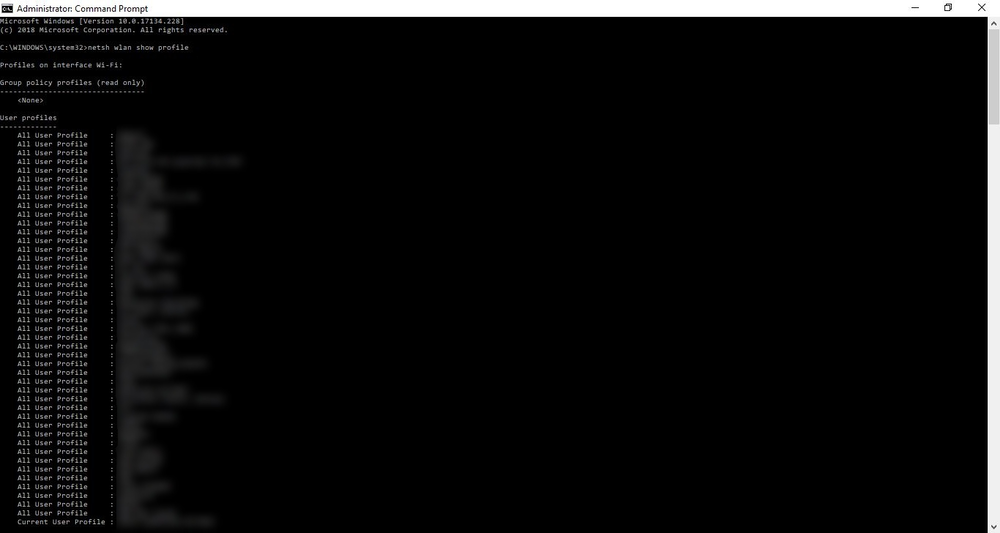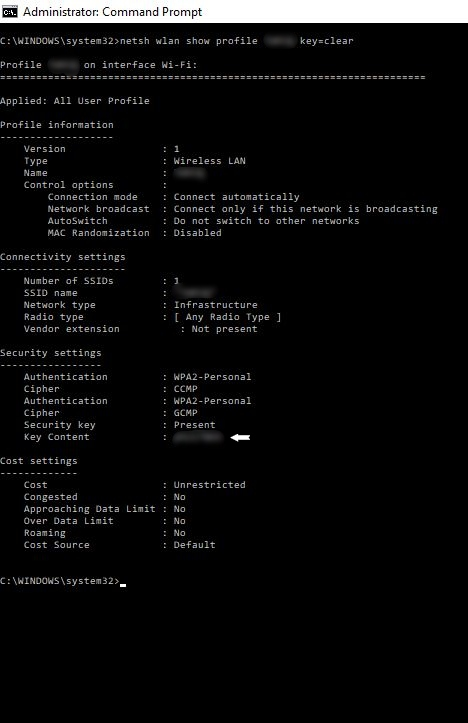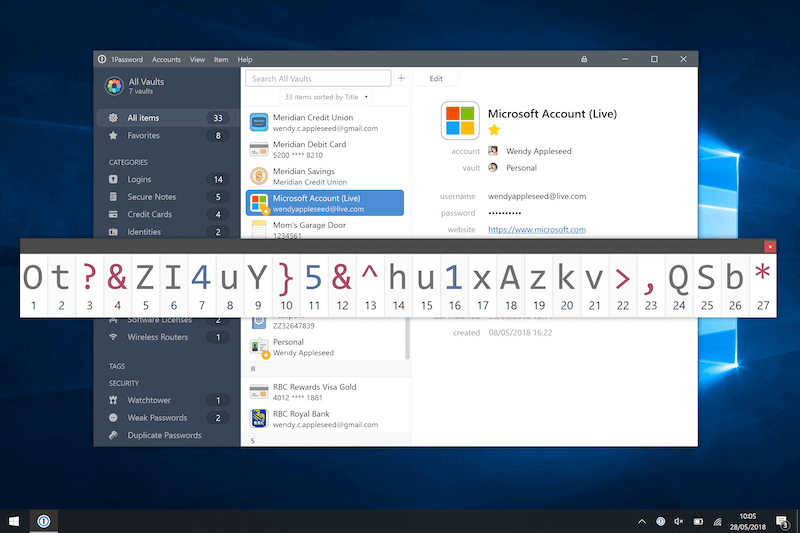How to see wifi password on windows 10
How to quickly find Wi-Fi password on Windows 10
Can’t remember your Wi-Fi password? Here are two easy ways to find it on Windows 10.
On Windows 10, you can find your Wi-Fi password for the access point you are currently connected to or saved networks, which can come in handy, for instance, if you are trying to help someone to join the same wireless network or want to remember it for future reference.
While the Settings app does not offer a way to view this information, you can use Control Panel to find the Wi-Fi password of the current connection and Command Prompt (or PowerShell) to view the current and saved network passwords you connected in the past. (You can also watch this video tutorial with the instructions to complete this task.)
In this guide, you’ll learn the steps to quickly find a Wi-Fi password on Windows 10 using Control Panel and Command Prompt.
Find Wi-Fi password using Control Panel
To view the current Wi-Fi password, use these steps:
Open Control Panel on Windows 10.
Click on Network and Internet.
Click on Network and Sharing Center.
Click the Change adapter settings option from the left pane.

Double-click the wireless adapter.

Click the Wireless Properties button.

Click the “Security” tab
In the “Network security key” field, check the Show characters option to view the Wi-Fi password.

Find Wi-Fi password using Command Prompt
Using Control Panel, you can only view the Wi-Fi password for the network you’re currently connected to. If you want to see your current password or saved Wi-Fi networks stored on Windows 10, you’ll need to use Command Prompt. These steps will also work on PowerShell.
To view Wi-Fi password from saved networks, use these steps:
Open Start.
Search for Command Prompt, right-click the result, and select the Run as an Administrator option.
Type the following command to view a list of the Wi-Fi networks your computer connected at one point in time and press Enter:
Type the following command to determine the Wi-Fi password for a particular network and press Enter:

The password will the displayed in the Key Content field under “Security settings.”
Remember to change WiFi-Profile for the name of your current or saved network you want to see the password in the command.
The steps to find the Wi-Fi password can always come in handy not only to help others to connect to the same network but when you need to reconnect after resetting your network connections.
We may earn commission for purchases using our links to help keep offering the free content. Privacy policy info.
All content on this site is provided with no warranties, express or implied. Use any information at your own risk. Always backup of your device and files before making any changes. Privacy policy info.
4 Ways To Find Out Windows 10 Wi-Fi Password
It’s not uncommon to forget your WiFi password as you only need to enter it once on your PC, and it will automatically connect to it when the network is near.
I personally use strong passwords (and you should too) for my WiFi and often forget them, but thankfully, Windows 10 makes it easy to view network password when needed.
If you don’t remember your WiFi password and need to give it to someone or use it on a different device, there are multiple ways to view it right inside your Windows computer.
Today, I am going to show your different ways to view the WiFi password. Each method is useful depending on your preference and how much access you have to the PC settings if you are not the administrator.
If you need help to generate a complex password then check out the password generator.
#1. Use Windows settings to view WiFi password
As I am the administrator of my PC and don’t have any restrictions, this is my go-to method for finding the WiFi password.
From the Start menu, click on Settings and then click on Network & Internet.
In the Status section, scroll down and click on Network and Sharing Center.
Now click on your WiFi name in the View your active networks section.
When the WiFi Status window opens, click on Wireless Properties here.
Afterward, move to the Security tab and check the checkbox next to Show characters to view your WiFi password.
#2. View WiFi password directly from the control panel
Although the above method works fine, what if you cannot access Windows 10 settings at all?
Or maybe you prefer a faster method and don’t mind remembering a small command. Well, you can directly access your WiFi network settings using the Run command. As long as you can access your network settings, this method should work for you.
Open the Run dialog by pressing Windows+R keys and type ncpa.cpl in the text field and then click on OK.
This command will directly open your network connection in the control panel—Right-click on your WiFi network here and select Status from the context menu.
Click on Wireless Properties in the WiFi Status window.
Now click on the Security tab and then click on Show characters to reveal your WiFi password.
#3. Use a Power Shell command
Coming to a more advanced method – in the Power Shell, you can use a Network Shell (Netsh) command to view a bunch of details about your network, including its password.
Furthermore, you can also use this method to view the passwords of all the networks your PC has connected to previously. For example, if you want to know your office network password while you are home, you can do so using this method without needing to connect to the office network. However, this will not work if you have used the Forget option to forget a network’s details.
First, you need to know the name (SSID) of the WiFi network to use the netsh command. This isn’t an issue if you are already connected to the network as you can see the name, but it will be a problem if you need to see a previously connected network’s password. Thankfully, you can use a Power Shell command to see the list of all the networks you have connected to before.
Note: You can use these same commands in Command Prompt, too, if you cannot access Power Shell for some reason.
Right-click on the Start menu and select Power Shell from the list.
Here enter this command netsh wlan show profiles and press the Enter key. You will see all the saved networks name under the User profiles section.
Just copy the name of the network(s) from here so you could easily use it in the next command.
To know the password of any one of the saved networks, use the below-mentioned command and replace the wifiname part with the actual name of the network.
netsh wlan show profile «name=wifiname» key=clear
Once you press the Enter key, you will see loads of information about this network. Here in the Security settings section, the password will be written next to Key content.
#4. Use a third-party WiFi password viewer
You can also use a third-party app to help you view all your saved networks and their passwords in one place. If you frequently need to view your WiFi password, then using a third-party is useful as it makes it a single-click process view all the data. Additionally, you may like to use third-party software if you need to perform more advanced tasks like importing WiFi passwords from another PC/Windows or exporting them.
If you are up for it, I’ll recommend you give WirelessKeyView from NirSoft a try. Although there are many apps for this purpose, I like WirelessKeyView for its simple interface and is completely free.
If you don’t like WirelessKeyView for some reason, you can also use WiFi Password Revealer. It’s an installable program that shows all the saved network passwords and lets you quickly copy them in bulk.
Bonus methods 😎
The above methods should work fine for finding the WiFi password inside Windows 10. However, there are some other methods as well.
From Router web-interface
You can access the web-interface of your router to access its settings. There is usually an option to both change the password and view it. There are no universal instructions I can provide you to help with this as routers have different addresses to access the web-interface and the interface itself is different depending on router manufacturer.
However, to give you an idea, you need to use your router’s IP address to access the web-interface. Inside, you need to look for a wireless setting or WiFi setting option. There should be an option to reveal the password in it.
At the back of the router device
If you didn’t change the default WiFi password, then most probably, the default password is written behind or under the router. Just pick it up and search for a password on it; usually, it’s an 8-digit password.
Reset the router
You can also reset your router, which will reset all your settings along with the WiFi password. You can then use the default password to connect to the network. There should be a reset button on the router to press and hold for 5-10 seconds to reset the router. It’s inside a hole on most routers, so you’ll have to use a paper pin or something similar to press and hold it.
Ending words
I am sure for most users; the first two methods will be more than enough to view the WiFi password. Although if you are a system administrator and need to handle multiple computers and connections, I’ll recommend using a third-party WiFi password viewer.
Next, find out how to optimize Windows power options.
How to View Saved Wi-Fi Passwords on Windows 10
Imagine this — you just bought a brand new phone or tablet and can’t wait to try it out. You unwrap the device and turn it on.
All goes smoothly until it prompts you to connect to a wireless network. But… you forgot the Wi-Fi password! Without that password, you can’t access the digital world on your new device.
Does this sound familiar to you? We all have been there! Thankfully, there are several ways to find that Wi-Fi password. All you need is a Windows computer that has connected to that network before.
In this article, I’m going to show you how to show WiFi passwords on Windows 10 so you can connect any new device without asking your geek friends or turning to the IT team for help.
Using a Mac computer? Read our guide on how to find wifi password on Mac here.
Method 1: View Saved Wifi Passwords via Windows Settings
The default method is to go through your Windows Settings. To use this method, you must be connected to the network whose password you wish to find.
Step 1: Open up Settings on Windows 10. You can type “Settings” and click the app that shows in the Windows search bar (under “Best match”) or click the settings icon on the bottom left.
Step 2: Click on Network & Internet once the settings window opens up.
Step 3: Scroll down until you see Network and Sharing Center, click on it.
Step 4: You should be directed to the following window. Click on the wifi network you are connected to.
Step 5: Click the Wireless Properties button.
Step 6: Hit the Security tab on the upper-right hand side. Then select the “Show characters” checkbox. This will show you the wifi password for the network you are connected to.
Method 2: Using a Wi-Fi Password Finder Program
If you want to find the WiFi password for a network you’ve used in the past, or you are experiencing trouble navigating Windows 10, you can use a free third-party program such as WiFi Password Revealer.
Step 1: Click here to download the program. Simply hit the blue “Download” button.
Step 2: Once the download is completed, open it in your browser.
Step 3: Select your desired language and click “OK” to continue.
Step 4: Select “Accept the agreement” and click “Next >”.
Step 5: Select the destination location to save the folder.
Step 6: Choose whether to add an additional shortcut. I recommend checking that for convenience’s sake, but it’s totally up to you.
Step 7: Click “Install”.
Step 8: Click “Finish” once the program is installed on your PC.
Step 8: The application will open and reveal all the networks you’ve connected to using your Windows device in the past, along with the passwords you’ve used to successfully connect to each one.
The advantage of this method is that you can see the Wifi passwords for every network you’ve connected to in the past. However, this method can only show you the Wifi passwords that you’ve used to access those networks. If they’ve been changed since then, you won’t see the new passwords.
Method 3: Finding WiFi Passwords via Command Line
For those of you who are comfortable with computers, you can also use the command line tool built into Windows 10 to quickly find saved WiFi passwords. It is very convenient, as you do not have to download any extra software and just run a single command. Here’s how to do it:
Step 1: Search and open Command Prompt app on Windows 10. Right-click and hit Run as Administrator.
Step 2: Type this: netsh wlan show profile. This will show you a list of networks you’ve connected to in the past.
Step 3: Find the network that you need the password for. Once you find it, type in the following: netsh wlan show profile [wifi-name] key=clear.
Remember to replace [wifi-name] with the real WiFi username. Then the password will appear next to the section which says Key Content.
Final Words
We all pretty much live in the digital world, a world that has tens, even hundreds of passwords to remember. You can memorize passwords to your social media, bank accounts, and other important sites, but probably not the Wi-Fi passwords at your home or workplace.
It’s always a good idea to use a password management tool like 1Password, which can save all your passwords and notes so you can access them with a single click. Read our detailed 1Password review or explore other good password managers here.
With 1Password, you can now forget your passwords 🙂
Or you can simply write down those easy-to-forget combinations on a sticky note and put it somewhere that you can’t miss — for example, your computer display, Internet router, or simply on the wall.
Even if you’ve totally forgotten those unimportant WiFi passwords, that’s okay. Hopefully one of the three methods shown above has helped you find those saved WiFi passwords on your Windows PC and connect you to billions of netizens across the world. None of the methods require an Internet connection to execute (except the second method, which requires access to the Internet to download).
Happy web surfing! Share your experiences and difficulties retrieving WiFi passwords on Windows 10. Leave a comment below.
I was looking for the key on a highly restrictive work computer that I was using from someone else’s office. Network settings didn’t work without admin password but command line did – thanks!
Hi,
I tried the third option but I can not see key content line? Why?
Thanks, Ida
because you were not previously connected to the profile you entered in cmd
How to check WiFi password without admin permission using cmd or other tricks?
you can use “method 2” in this video without administrator permission to view all saved wifi password by using cmd:
very helpful, thank you so much
the first way is the best
i can use the 1st option when only im connected to the network. but not when im off line. the 3rd method never showed the content.. total fail
Submit a Comment Cancel reply
We are an independently-owned software review site that may receive affiliate commissions from the companies whose products we review. As an Amazon Associate, we earn from qualifying purchases. We test each product thoroughly as best we can and the opinions expressed here are our own.
Ashish Mundhra
14 Oct 2015
There can be a lot of reasons as to why you might want to know the Wi-Fi password for a network you are currently connected to or you have connected in the past. Either your friend wants to know the password for the café you regularly visit, or you just want to know the password of the Wi-Fi at your friend’s place who won’t tell you and prefer typing it.
We have already seen how to uncover the secret on Android and iOS and today we would see how to get that done on a Windows computer. Just make sure you have the admin access to the computer.
View Password of Network You are Connected to
The trick I am going to show you right now has been documented on Windows 10. But it also works on Windows 7, 8 and 8.1. When you are connected to the network, right click on the Wi-Fi icon on the Windows System Tray and click on Open the network and Sharing.
Once the Network and Sharing Center opens up, it will list all the networks your computer is currently connected to under the Active Network section. Click on the Connections: your computer is connected to and it will open the Wi-Fi Status Window.
Click on Wireless Properties in the Wi-Fi Status window and Wireless Network Property of the connected network. The page will show you the connection name and type and will have a Security tab you can click on.
The Network Security Key option will have the Wi-Fi password and you can check the option Show characters to make the password visible. Do not change any properties in here or it might mess up the connection and you can have trouble while connecting next time.
That was an easy solution to find the password to the network you are currently connected to. What if I share a secret using which you can get Wi-Fi password of networks you are not connected to anymore?
While we’re on networking: Why don’t you check out how you should pick out a Wi-Fi router that is right for you.
View Passwords of Networks You Were Previously Connected to
Open the command prompt, with admin access of course, and type in the command netsh wlan show profiles. It will list all the Wi-Fi networks you have connected to. Each of these mentioned profiles will be displayed using the SSID Name.
The next command you should type is netsh wlan show profile name=”Profile-Name” key=clear. The profile name should be the name of the Wi-Fi network you wish to know the password of and without quotes. The screenshot will clear any doubts you might have.
That’s all, the password for the said network will be displayed under the security tab.
Word of Advice on Windows 10 Wi-Fi Sense
While talking about the Windows 10 W-Fi Sense previously, we mentioned that a user will have to type in the password again to enable Wi-Fi password sharing. But the trick might be a way to break that. So if you really don’t what to share your Wi-Fi, read about the Optout trick.
Conclusion
So that was how you can view saved Wi-Fi password on Windows. Don’t forget to check out how you can view the saved Wi-Fi password on Android and iOS. For any doubts, you can join me on our forum. have a good one guys.
Last updated on 5 Jul, 2019
The above article may contain affiliate links which help support Guiding Tech. However, it does not affect our editorial integrity. The content remains unbiased and authentic.
Read Next
7 Best Ways to Fix Kindle for PC Desktop App Won’t Open on Windows
Can’t open the Amazon # Kindle app on your # desktop PC? Here are some solutions to fix that issue so you can get back to reading your books in peace in your free time.
What Is Microsoft Power Automate Desktop and Why Do You Need It
Everything you need to know about # Microsoft # Power Automate Desktop. Where to get it, how to use it, how to create your first workflow, and who should use it. Complete guide.
6 Best Ways to Fix Action Center Greyed Out on Windows 10
Is the Action Center greyed out on your # Windows 10 computer? Here is an in-depth look at all the solutions that can help you fix this issue promptly.
8 Best Ways to Fix Google Chrome Security Certification Error
Learn how to fix the # Google # Chrome # Security certification error by following the post below.
How to Use Paint 3D to Edit Photos
Wondering how to edit pictures using Paint 3D in # Windows 10? Check our detailed guide on how to use various tools in Paint 3D to edit images.
7 Top Ways to Fix OneNote Notebook Disappearing Error on Windows
Can’t find # OneNote Notebook? Here are a few ways to find missing OneNote notebooks and notes on # Windows 10 computers. Most probably, they are missing and not lost.
6 Best Ways to Fix Store Data Structure Corruption on Windows 10
Facing the BSOD or blue screen of death with the ‘store data structure corruption’ error on your # Windows computer screen? Here are some solutions with explanations to fix it.
7 Best Ways to Fix Hibernate Goes to Lock Screen Error on Windows 10
Activating hibernate mode leads to the lock or login # screen on # Windows 10? Here are a few solutions that will help you fix the issue so you don’t have to worry about battery juice again.
Did You Know
Wi-Fi signals are generally in the shape of a doughnut.













